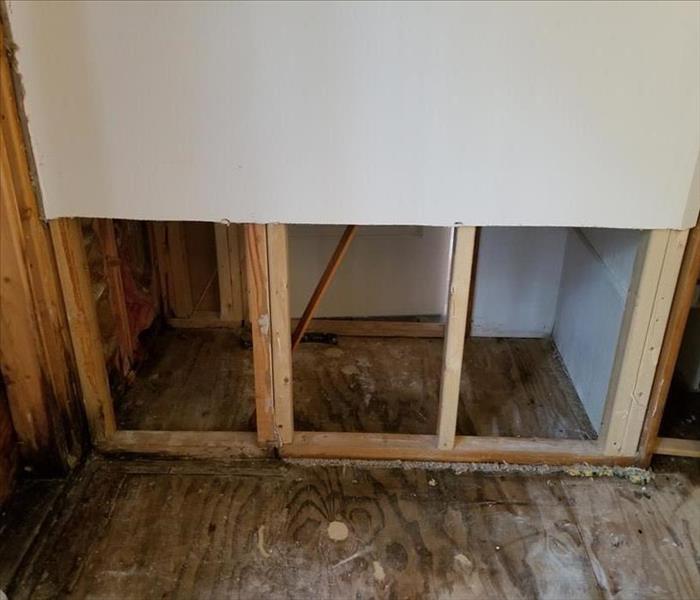3 Ways To Avoid Mold After a Flood
4/1/2022 (Permalink)
 Some building materials are more prone to mold growth. Molds feed on cellulose plant fiber, which is found in drywall.
Some building materials are more prone to mold growth. Molds feed on cellulose plant fiber, which is found in drywall.
3 Tips For Avoiding Mold After A Flood
Flooding can severely damage structures in Lafayette, CO, and mold may continue to cause problems even after an immediate response to water damage. It is important to take these three timely measures to mitigate water damage and manage risk factors for mold growth.
1. Extract Standing Water
One of the most decisive factors for a mold infestation is the presence of standing water or residual moisture in the days after a structure floods. Extracting water with pumps, a mop or a wet vac is the first step toward preventing surfaces from staying saturated long enough for mold to start multiplying, which can occur in as little as two to three days.
2. Tear Out Ruined Building Materials
Some building materials are more prone to support mold growth than others. Drywall and carpet both contain the plant fiber cellulose, which serves as a food source for mold. When moisture remains present for 48 hours or longer, mold may start to form on or in these materials. Most storm damage restoration experts recommend tearing out and replacing porous materials.
3. Disinfect and Dry the Affected Area
Once any materials exposed to flooding that cannot be thoroughly disinfected have been torn out, all remaining surfaces and contents should be disinfected. Drying the area as quickly as possible makes an environment less conducive for microbes such as bacteria and mold. Air movers and fans can increase circulation, and a dehumidifier can maintain relative humidity levels between 30% and 50% to discourage fungus growth.
Extracting water as soon as possible after a flood and proceeding to remove ruined materials, clean and disinfect the portion of a structure exposed to water damage and maintain low indoor humidity levels reduces the risk of mold growth. Restoration professionals can recommend further measures to ensure that mold does not pose a problem at a commercial property in Lafayette, CO.






 24/7 Emergency Service
24/7 Emergency Service